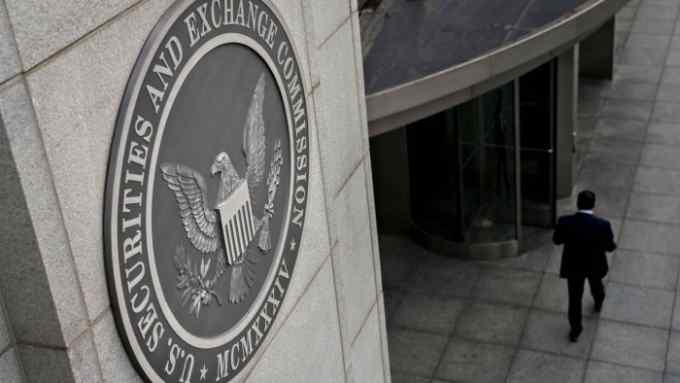Investors query value of smart beta asset manager fees

Roula Khalaf, Editor of the FT, selects her favourite stories in this weekly newsletter.
More than $1tn is now invested in exchange traded funds that employ smart beta strategies, but are investors being short changed by the asset managers running these vehicles?
Smart beta ETFs are generally structured as “long-only” — meaning their trading positions are restricted to holding shares or assets in the hope their prices rise. By contrast, other factor-based funds can also take “short” positions — betting that prices will fall.
According to multiple academic studies, it is these factor-based portfolios, constructed using the most widely studied factors — value, size, momentum, low volatility and quality, or a combination of them — that can deliver market-beating returns and improved diversification.
But the academic studies use parameters that are seldom followed in the real world by smart beta funds.
“There are only a few ETFs and liquid alternative mutual funds that provide exposure to factors in the concentrated, equally-weighted long-short format as seen in academic research,” says Nicolas Rabener, founder and chief executive of Factor Research, a research boutique.
“The majority of smart beta ETFs tend to be market capitalisation weighted and overly diversified with too many constituents, so they are correlated to the underlying market and don’t provide meaningful factor exposures,” he says.
Inigo Fraser Jenkins, a senior analyst at AllianceBernstein, the asset manager, says the debate about long-only smart beta funds versus long-short factor funds comes down to the type of risks investors can take.
“Long-only smart beta ETFs are very cheap in terms of fees, but the risk is dominated by equity beta (the performance of the overall stock market), which has been a nice thing to have in recent years,” he says.
However, Rabener questions whether it is worth paying for smart beta ETFs, which only provide “slight factor tilts”, and are more expensive than conventional index-tracking funds.
“Smart beta ETFs are probably not worth the higher fees compared to plain-vanilla equity ETFs, ” he argues. However, these criticisms over costs and design have not dented investor appetite for smart beta vehicles, which has continued to increase.
“Assets in smart beta ETFs were $1.24tn at the end of June after registering net inflows of $102bn in the first half of this year, which is almost double the inflows of $52.3bn recorded over all of 2020,” notes Deborah Fuhr, founder of data provider ETFGI. And returns so far this year from long-only versions of the five most popular factor strategies have trounced the corresponding long-short versions, according to data from Factor Research.
In fact, returns from long-short factor strategies since the financial crisis have been mixed, at best. Academics point out that extended periods of underperformance for individual factors are not uncommon. But even some sophisticated actively managed multi-factor funds have performed poorly compared with a conventional tracker.
The AQR Equity Market Neutral fund — the best known long-short factor strategy open to all investors — has delivered annualised total returns of minus 0.27 per cent since it was launched in July 2014. The fund’s assets have now sunk from a peak of $2.5bn to $50m.
Guido Baltussen, head of quant allocation at Robeco, the Dutch asset manager, says the short positions used in factor strategies provide “little value” to most investors. “The dominant part of factor premiums [returns] is generally on the long side,” he suggests.
Building portfolios of short positions brings more cost and risk, too. Fees must be paid to borrow stock in order to sell it short, but short positions can suffer big losses if a company announces positive news.
Some countries also have a partial or complete ban on short selling, and liquidity constraints can affect the returns from shorting in markets where it is allowed. All of these issues complicate the construction of short portfolios and can reduce returns.
Robeco suggests that a more efficient approach to factor investing is to concentrate on long positions and use derivative contracts to hedge against unfavourable movements.
Andrew Lapthorne, a quantitative strategist at Société Générale, says low interest rates have “polluted” factor strategies and contributed to their underperformance in the past decade. Recent increases in inflation have raised expectations that central banks in the US and UK will raise interest rates, but their room to tighten monetary policy is constrained by high levels of debt, Lapthorne adds.
Central banks are also expected to slow the pace of the multitrillion dollar asset purchase schemes that were introduced in response to the coronavirus pandemic, which have helped to fuel a rally for stock markets across much of the developed world over the past 18 months.
This could weigh on smart beta ETFs if their returns are dependent on equity beta.
Fraser Jenkins says AllianceBernstein expects sustained inflationary pressures and changes in the market environment to prompt fresh debate about the role of factor strategies. “The strategic role that factors play in portfolios is becoming more important as investors run out of options in terms of the ranges of risk and return in portfolios,” he says.

Comments